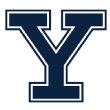
For the first time in three years, the Yale Bulldogs are back in the Big Dance. Yale's last NCAA tournament appearance in 2016 broke a 55-year drought for the school. Head coach James Jones now has this program in a position to continue regularly punching its ticket to postseason play. The Bulldogs have the talent and the skill to compete in March, especially behind junior star Miye Oni. In 2016, the program won its first game in NCAA tournament history. Can they take things a step further and be one of this year's surprise Cinderellas?
ESPN+ has your answers, as Joe Lunardi has enlisted a team of bracketologists to compile advanced metrics, key scouting intel and best- and worst-case tournament scenarios for all 68 teams to help you make smart picks in your bracket.
TOURNEY PROFILE
Best wins: vs. Miami, vs. California
Worst losses: vs. Columbia, at Penn
Regular season conference finish: T-1, Ivy League
Polls and metrics: The Bulldogs rank 77th in BPI, 82nd in KenPom, and 85th in NET.
All-time tourney record: 4-1
Coach (tourney record): James Jones (1-1)
PERSONNEL
(Note: Player statistics are through games of March 16.)
Starting lineup
F Jordan Bruner (10.2 PPG, 8.4 RPG, 3.0 APG)
F Blake Reynolds (11.3 PPG, 4.5 RPG)
G/F Miye Oni (17.6 PPG, 6.4 RPG, 3.6 APG)
G Trey Phills (7.0 PPG, 3.4 RPG)
G Alex Copeland (13.4 PPG, 3.3 APG)
Key bench players
F Azar Swain (7.5 PPG, 2.7 RPG)
C Paul Atkinson (9.2 PPG, 5.3 RPG)
G Eric Monroe (2.1 PPG, 1.5 RPG)
Biggest strength: Yale's success is driven by offensive firepower. The Bulldogs play a fast-paced style and have the scorers to attack at any moment. Yale led the Ivy in a host of offensive statistical categories, such as points per game, field goal percentage, free throw percentage and turnover rate. Jones has his Bulldogs team spread the floor, using ball movement and penetration to open up shooting chances. Yale scored 97 points against Harvard to win the Ivy League tournament, perfectly encapsulating the kind of offense we've come to expect from the Bulldogs.
Biggest weakness: Yale's defense has been good enough for most of the season but could struggle against tournament-level competition. The Bulldogs' most glaring deficiency on defense has been an inability to force turnovers. Yale ranked 15th worst in the nation at forcing turnovers and dead last in the Ivy League in that stat. Some teams can survive those extra possessions, but for a Yale team looking to push the pace and run in transition, those turnovers are sorely missed.
Best player: Oni is the rare Ivy League player with the size and athleticism of a power-conference player. He's a 6-foot-6 swingman who can slash into the paint, step out for a jump shot and defend multiple positions. Oni averages 17.6 points, 6.4 rebounds and 3.6 assists per game, pacing everything the Bulldogs accomplish. NBA scouts aren't often found in Ivy League gyms, but Oni has them showing up to see his game in person.
X factor: Swain is a good enough shooter to make opposing teams shift their entire defensive scheme toward him. He shot better than 40 percent from long range this season on more than four attempts per game. Although defenders know his shooting ability and always get a hand near his shots, Swain is able to hit tough shots. When defenders are sucked his way rather than playing help defense, Oni and Copeland take advantage, slicing into the paint for buckets.
SCOUTING REPORT
How they beat you: Yale wants to push the ball in transition and score in bunches. Oni is very tough to guard with a full head of steam, and players like Swain, Copeland and Phills are excellent at finding a spot to fill on the fast break. Even Yale's big men are lean and agile, beating opposing bigs to the block for position. Although Yale's defense isn't elite, the Bulldogs are able to clamp down late in games. When Yale defeated Miami this season, the Hurricanes managed only five points in the final 10 minutes of the game.
How you beat them: Yale does not like to play at a slower tempo, having lost when teams like Penn and Vermont controlled the pace of the game. Oni and Copeland are great at taking advantage of defenses that are out of position. In the half-court against a team with time to set its defense, Yale's offense can stall. If Yale doesn't get a shot in transition and needs to back the ball out to reset, the defense has a leg up.
WHAT THE NUMBERS SAY
(Note: All statistics in this section are courtesy of kenpom.com and are accurate through games of March 17.)
NATIONAL RANKS
Offensive efficiency, 44th (111.7)
Defensive efficiency, 149th (103.1)
3-point percentage, 42nd (37.4)
3-point percentage D, 29th (31.2)
Free throw rate, 250th (30.5)
Free throw rate D, 120th (30.6)
TO percentage, 338th (15.2)
TO percentage D, 139th (18.0)
HOW FAR WILL THEY GO?
Best-case scenario: Second weekend
There's no reason this Yale team can't win twice and advance to the Sweet 16. Every year at least one double-digit seed sneaks through, so why not Yale? The Bulldogs can score with anyone, already have multiple victories over power-conference teams and have a potential breakout star in Oni. If Yale plays as well as it is capable of, there's a glass slipper waiting with the Bulldogs' name on it.
Worst-case scenario: One-and-done
Yale's offense can hang around with anyone, but defense is key in March. If the Bulldogs can't ratchet up the intensity to get crucial stops, they won't be able to win in the tournament. Playing at Yale's pace can be dangerous when facing the kinds of shooters and athletes who await the Bulldogs in the Big Dance.
